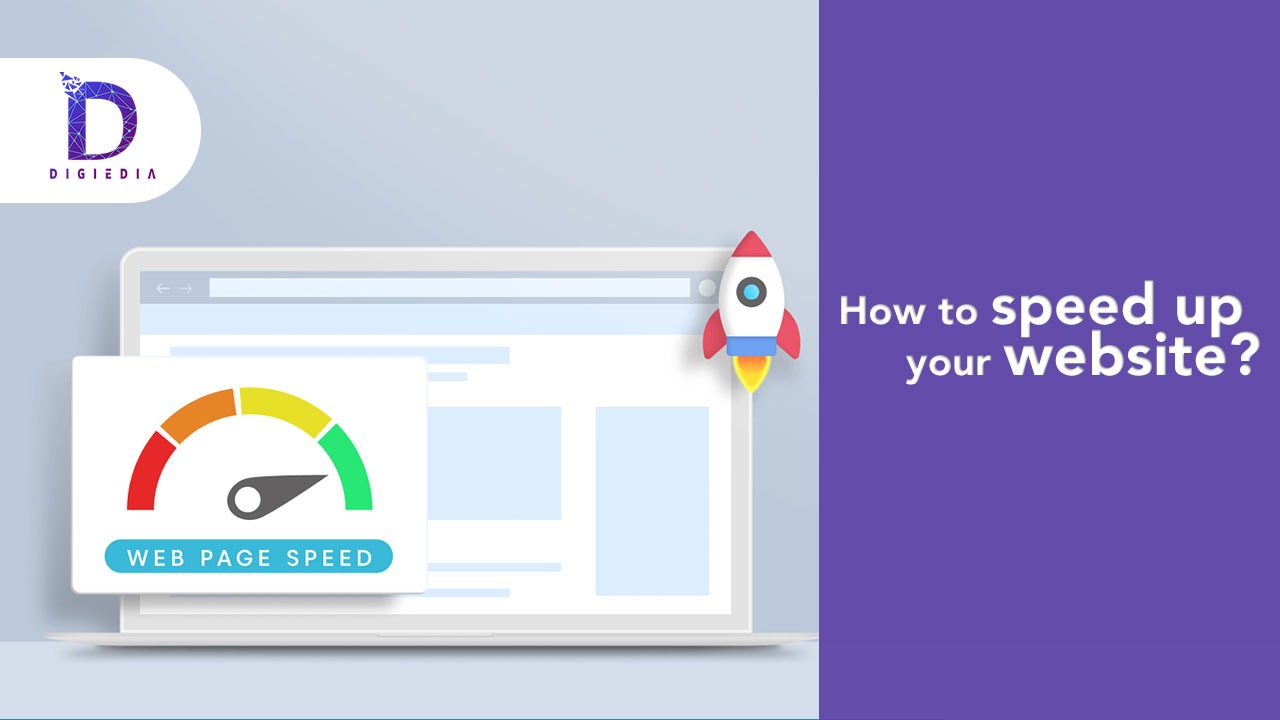
How to Speed up your website?
- DIGIEDIA
- Blogs, SEO (Search Engine Optimisation)
- 10 December 2021
- No Comments
Conversions are killed by slow websites. And will never be able to recover. In fact, 47% of customers anticipate websites to load in under two seconds. And 40% of people will quit a page that takes three seconds or longer to load. If your website takes more than 5 seconds to load, nearly half of your website visitors will leave before they even get there. That alone is a major setback for your conversion rates. Google has historically used site speed as a ranking factor. On February 4, 2014, Google received a patent for site speed (US Patent 8,645,362). Following this focus on desktop page load time, Google’s “Performance Update” in 2018 included mobile page speed as a ranking consideration.
By March 2021, the world’s most popular search engine plans to have completed its transition to mobile-first indexing. As a result, it’s more crucial than ever to pay special attention to the speed with which your mobile website loads. Whether you’re looking at organic search results, site engagement, conversion rate, bounce rate, abandonment, or loyalty, sites that load quickly perform better across a range of marketing and SEO KPIs. According to Google and Deloitte studies, optimising page loading time by 0.1 seconds can increase conversion rates by 8%. Following are few ways through which you can speed up your websites.
Reduce HTTP requests as much as possible.
According to Yahoo, downloading the various pieces of a Web page, such as graphics, stylesheets, and scripts, takes up 80% of the load time. Each one of these items requires an HTTP request, therefore the more on-page components there shall be, the longer it takes for the website to render. The first step in reducing your requests is to determine how many your site currently generates and use it as a baseline. If you are using Google, you shall be able to check how many HTTP requests your site makes using the browser’s Developer Tools.
For CSS and JavaScript files, you should use asynchronous loading.
You may also optimise the way some of your files load on your pages once you’ve minified and merged them. CSS and JavaScript scripts can be loaded in one of two ways: synchronously or asynchronously. When your scripts load synchronously, they do so one by one, in the order they appear on the page. When your scripts load asynchronously, however, some of them will load at the same time. Because a browser loads a page from top to bottom, loading files asynchronously can speed up your websites. If it reaches a non-asynchronous CSS or JavaScript file, it will pause loading until it has fully loaded that file. If that same file was asynchronous, the browser might continue to load other components on the page while it was waiting for that file to finish.
Reduce the time it takes to get to the first byte.
In addition to the time it takes for your website to fully load, you should also consider the time it takes for it to begin loading. The time it takes for a browser to get its first byte of data from the server is known as the time to first byte or TTFB. A TTFB of less than 200 ms is recommended by Google. This is a server-side matter, unlike many of the front-end performance factors that most site owners focus on. A user’s browser makes an HTTP request to the server that hosts your site when they visit it.
Choose the best hosting plan for your requirements.
The majority of new website owners opt for the cheapest hosting service available. While this might be sufficient at first, if you start receiving more traffic, you will most certainly need to upgrade. Don’t scrimp on your host; find someone you can rely on. Here’s a terrific collection of reviews on the finest web hosts.
When it comes to hosting, there are three options:
- Shared hosting
- VPS hosting
- Dedicated server
Conduct a compression analysis.
It’s in your best interests to compress your files as much as possible without sacrificing quality to speed up your website. The smaller your files are, the faster they’ll load — and the sooner they’ll load, the faster they’ll load overall. Pages containing a lot of photographs and other material can easily exceed 100KB in size. As a result, they’re large and take a long time to download. Download times can be sped up by compressing them. You may use GIDNetwork to do a compression audit to see how compression could help your site load faster.
Image sizes should be reduced.
Images can have a significant impact on the speed of your website. They’re frequently huge files, which can cause page load times to be slow. However, deleting them completely is not an option. Consider the following: Conversion rates for eCommerce websites are typically between 1-3 per cent. Including a lot of helpful products, photos is one of the best strategies to get your conversion rate to this level. According to one survey, 66 per cent of shoppers want to examine at least three product photographs before making a purchase. This means that photos are absolutely necessary if you want to run a successful eCommerce site.
Use CDN
You can use other networks of servers in addition to the server that hosts your site to reduce load times for your visitors. Each person who sees your site sends requests to the same server if it is hosted on one server. This usually implies that when your site receives a lot of traffic, the time it takes to process each request increases, slowing down all load times. This is far from ideal when you realise that high-traffic times often bring a lot of growth possibilities for your organisation. A Content Delivery Network, or CDN, can assist you in resolving these challenges. Your site is cached on a global network of servers when you use a CDN. When a user’s browser requests files from your site, the request is forwarded to the server that is nearest to the user. This will be of huge help to speed up your website.
